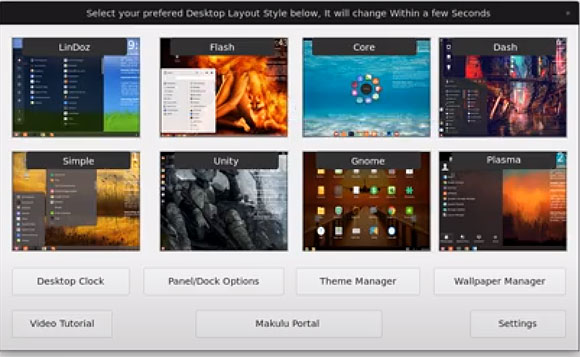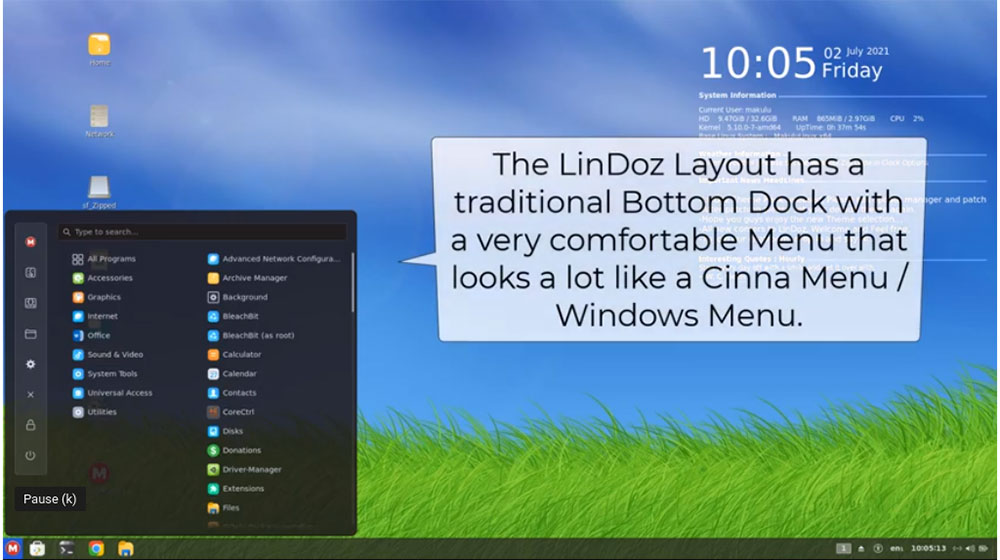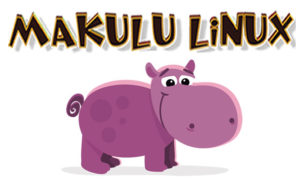In September 2020 Jacque Montague Raymer, developer and creator of the MakuluLinux family of distributions, released a new distro inspired by a project he shelved several years ago. On Aug. 10 of this year, he released an upgrade that puts an expanded “Shift Distro” into revolutionizing the Linux distribution’s user interface.
MakuluLinux Shift is a well-designed Linux distro that blends several mainstream design concepts with performance features not found elsewhere. One of Shift’s most unique features — which Raymer greatly expanded in the 2021-08-10 version — is the ability to modify major design elements effortlessly. Hence, its name.
A few other Linux distros have limited mechanisms to alter the look and feel of the desktop. They typically involve downloading separate installation files and reinstallation procedures. That requires configuring the integration and hoping the foreign integration works. Many times, it does not work smoothly.
Shift does more than repaint a pretty desktop picture. It does a system-wide adjustment of all things desktop-related. The entire desktop changes before your eyes with a click of a button.
Within seconds, the complete operating system is transformed. That includes menus, docks, icon sets, cursors, panels, styles, and themes.

The heart of the transfer tool is the Layout Manager, where you can select from among eight layouts and modify numerous components beyond the default systemwide changes.
MakuluLinux Timeline
MakuluLinux debuted in 2013 with a different approach to implementing Linux OS features. The last few years have brought considerable change and new development to this Linux family.
Raymer started MakuluLinux in his previous location in Africa. Hence the distro’s name reflects the African continent. “Makulu” is the word for “big chief” in the Zulu language. Now located in Vietnam, that name is still very appropriate to this distro’s branding.
Earlier versions of MakuluLinux offered a choice of Xfce, KDE, and Enlightenment 17 desktops. Rebuilt from the ground up in 2015, Raymer re-engineered his distros into three different editions. Last year, the developer did another round of rip, replace, and rebuild.
MakuluLinux now comes in four editions, including Shift. But if you run the Shift distro, you can experience eight desktop environments. The other three editions are Core, Flash, and LinDoz.
LinDoz features an in-house modification of the Cinnamon desktop. Flash runs an in-house modified version of the Xfce environment. Core, which introduced some radical changes, uses a highly customized desktop forked from Xfce and Cinnamon, with elements of GNOME.
Desktop Transformer Tool
Raymer’s transformable operating system provides the supported desktop environments’ pieces within the downloaded ISO. This way, the user can do only one installation and set up the distro’s options only one time. Altering the desktop takes just one click and a few seconds for the magic to happen.
So far, MakuluLinux Shift comes with eight resident desktop interfaces. The developer plans to add more and deliver them via upcoming over-the-air (OTA) system updates as part of the partial rolling update distribution process.
In this second Shift release is eight unique environments: LinDoz, Core, Flash, Simple, Dash, Unity, Plasma, and Gnome. Each desktop environment has its own distinguishing look and feel.
Included are eight distinct layouts consisting of 330 eye-popping wallpapers, 92 icon sets, 20 cursors, 14 GTK themes, various docks, panels, and menus. No internet is needed to download any new packages. You do not have to download and run any scripts. You do not have to configure anything. Just click on the menu item and select the desktop view you desire.

Eye-popping backgrounds provide stunning choices that differ based on the desktop layout selected.
Wait. It gets even better. Users can also create their own unique layout and add it to the existing collection.
I tested and reviewed the first-generation Shift release last year and found that it worked as advertised and was stable. This expanded feature in the new Shift release works out-of-the-box perfectly.
Being able to easily shift around a variety of user interfaces puts MakuluLinux a solid notch higher up the Linux innovation stack. Raymer’s shift concept will no doubt be “borrowed” by modified by other distro developers. That is what Raymer is expecting.
“This is the world’s first transformable Linux distro, so it’s a pretty big deal, especially for our project. For the first time, we have released something that doesn’t exist anywhere else. No one has been able to achieve this, and I suspect this is going to become the new norm. I’m pretty sure other developers will copy and follow this release,” Raymer told LinuxInsider.
Shifting Away From Other Editions
Raymer’s Linux development passion feeds his constant quest to move forward with distribution innovations. To that end, he has more changes in mind.
No doubt, the Core, Flash, and LinDoz distros will only remain for a while. But no new distros will be added.
Why? Shift needs to evolve and requires his full attention to do so, Raymer explained. But he will maintain the current line of released distros. Eventually, the Shift distro will replace them all.

Flavor your computing cravings with the LinDoz Layout if you yearn for a Cinnamon or Microsoft Windows experience.
“Shift will now replace our other distros, at least short term, since changing a layout essentially feels one-to-one, just like the original distro. For LinDoz, Flash, and Core, Shift clones them perfectly,” he said.
The existing Shift release is based on Debian Testing. Shift is developed on the Gnome Framework and fully supports the new Gnome 40 and its features.
Raymer is busy with an Ubuntu variant of Shift as well. It should be ready sometime over the next few weeks.
“The Debian variant just won that race, but the Ubuntu variant is not far behind,” he said.
All four current MakuluLinux editions are available in the Debian codebase. Each edition will also be available in the Ubuntu variant as well.
Under the Hood
Shift’s Software Center fully supports Flathub and Snaps software installation packages. But unless you have non-typical computing needs, you most likely will not need to add much in the way of more software titles.
With the notion of bloat in mind, Raymer did a fairly decent job of balancing the number and types of applications he bundled into this distro. All that software is preconfigured, so everything just works.
MakuluLinix Shift is much more user-friendly with Debian backend applications like Driver manager, Keyboard manager, and Language manager. Also included is a large selection of preinstalled drivers to ensure that plug-and-play devices work without trouble.
Shift is designed on the Gnome framework, so it supports using gnome extensions. You also get support for special effects for a Compiz-like functionality.
Perhaps the Constructor Tool is on a par with the desktop switcher feature in terms of functionality that distinguishes MakuluLinux from other distros. The Constructor Tool lets you fully automate backing up your running copy of the OS to an installation ISO. This makes it easy to duplicate your configuration when installing Shift on other computers.
Bottom Line
The Shift distro on its own is an apt replacement for the other three MakuluLinux editions. It rolls into one platform the best features of popular desktop environments and rolls them together into one computing platform.
What gives MakuluLinux a big edge over other Linux options is the extent of the tweaking Raymer built into the codebase. You see this in the configuration options and setup choices of each layout. You also see it in the look and feel that resembles some of the most popular desktop environments.
This is an important distinction when you use the revolutionary transformer tool. The look and feel of all eight layouts approximate the look and feel of the various desktop options. Each of the layouts has its own similarly responding interface functions. But the baseline Shift functionality is all a tweaked version of what the MakuluLinux distros offer.
Remember what those two words mean. The LOOK in “look and feel” refers to the appearance of the desktop’s design. The FEEL is a suggestion of how the UI works in that desktop modification within this MakuluLinux OS.
MakuluLinux can transform your computing experience. Shift is one of the most configurable and easy-to-use Linux platforms you will find anywhere.
Want to Suggest a Review?
Is there a Linux software application or distro you’d like to suggest for review? Something you love or would like to get to know?
Please email your ideas to me and I’ll consider them for a future column.
And use the Reader Comments feature below to provide your input!















































